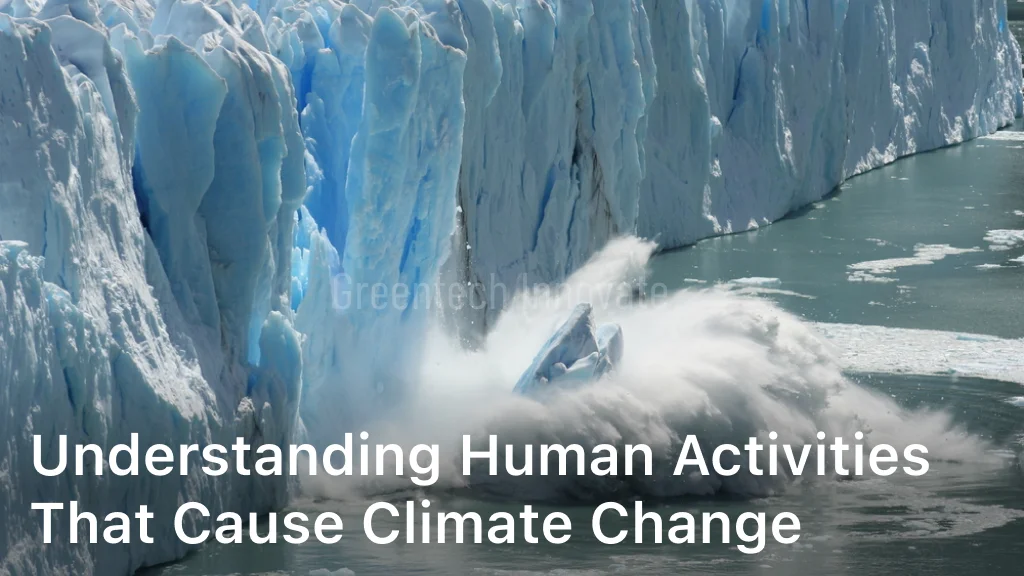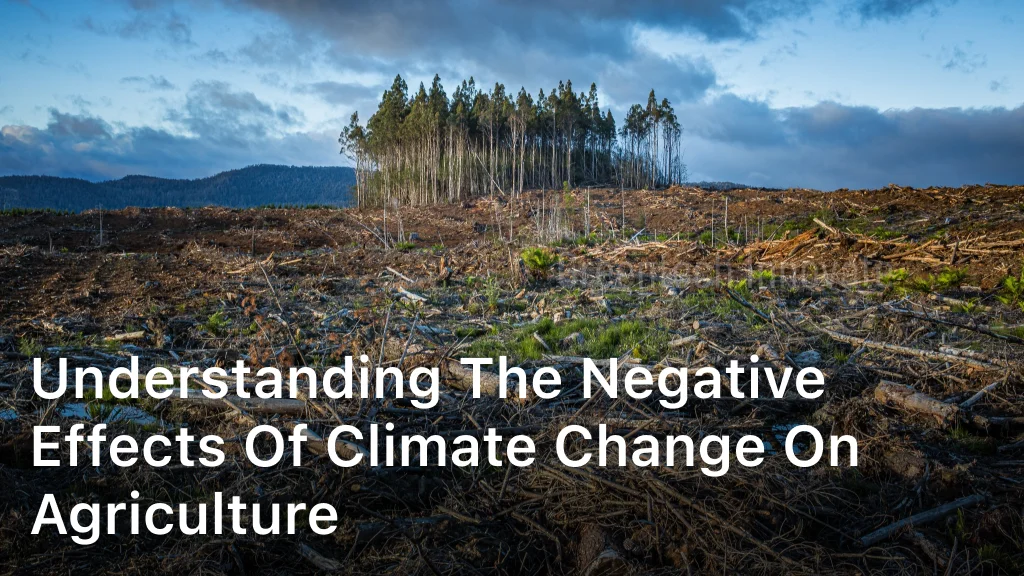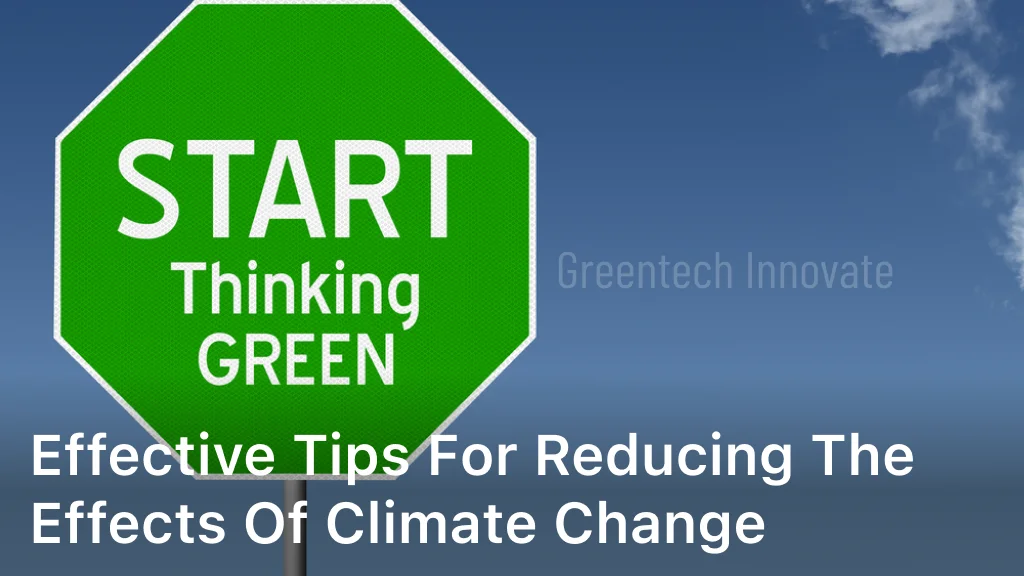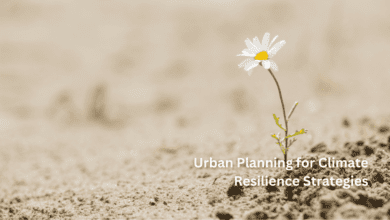
greentechinnovate.com. Understanding Human Activities That Cause Climate Change. Discover how our daily routines contribute to climate change. Uncover the human activities that cause climate change and what we can do to help.
Climate change is a complex issue that affects the world we live in today and poses a significant threat to future generations. Human activities are primarily responsible for the adverse effects of climate change.
These activities range from everyday actions to large-scale industrial processes and are responsible for the emission of greenhouse gases that contribute to global warming and climate change. Understanding human activities that cause climate change is crucial for mitigating their impact and working towards a sustainable future.
Understanding Human Activities That Cause Climate Change
Key Takeaways
- Human activities are primarily responsible for the adverse effects of climate change.
- Greenhouse gas emissions from human activities contribute to global warming and climate change.
- Understanding human activities that cause climate change is crucial for mitigating their impact and working towards a sustainable future.
- By making sustainable choices in our daily lives, we can actively participate in mitigating climate change and ensuring a healthier planet for future generations.
- Collective action is essential to address the global issue of climate change.

The Role of Fossil Fuel Consumption
When it comes to human activities that cause climate change, one of the most significant contributors is fossil fuel consumption. Burning coal, oil, and natural gas releases greenhouse gases into the atmosphere, trapping heat and causing the planet’s average temperature to rise.
In fact, according to research, greenhouse gas emissions from burning fossil fuels account for approximately 65% of all human-caused emissions.
Our reliance on fossil fuels has been the driving force behind the industrial and technological advancements of the past century. However, the downside of this progress is the significant environmental impact it has had, particularly on our climate.
To better understand the impact of fossil fuel consumption on climate change, let’s take a look at some key statistics:
| Fuel Source | Carbon Dioxide Emissions per Unit |
|---|---|
| Coal | 0.215 metric tons |
| Oil | 0.161 metric tons |
| Natural Gas | 0.056 metric tons |
As the table illustrates, coal is the most carbon-intensive fuel source, followed by oil and natural gas.
Considering the impact of fossil fuel consumption on climate change, it’s crucial that we reduce our reliance on these non-renewable resources and transition to cleaner energy sources like wind, solar, and hydropower. Additionally, we can take steps to reduce our carbon footprint by making sustainable choices in our daily lives, such as using public transportation, reducing energy usage at home, and supporting businesses that prioritize environmental sustainability.
“We cannot afford to ignore the impact of fossil fuel consumption on climate change. By transitioning to cleaner energy sources and making sustainable choices in our daily lives, we can work towards a more sustainable future for ourselves and future generations.”
Deforestation and Its Impacts
In our previous section, we discussed how fossil fuel consumption is a major contributor to climate change. However, it’s not just the burning of fossil fuels that has an impact on our planet. Deforestation is another human activity that significantly contributes to climate change.
Deforestation is the process of clearing forests for agriculture, logging, and urbanization. According to the Food and Agriculture Organization (FAO), global deforestation continues at an alarming rate of 10 million hectares per year. Deforestation in tropical regions, such as the Amazon rainforest and the Congo basin, has severe consequences for the planet.
The impact of deforestation on climate change
Forests act as carbon sinks, absorbing carbon dioxide from the atmosphere and storing it in their trunks, branches, and leaves through the process of photosynthesis. When forests are destroyed, this stored carbon is released back into the atmosphere in the form of carbon dioxide, contributing to the greenhouse effect and global warming.
Deforestation is responsible for approximately 15% of global greenhouse gas emissions, which is equivalent to the emissions from the entire transportation sector. It’s clear that deforestation is a significant contributor to climate change, and action must be taken to mitigate its impact.
The causes of deforestation
The primary causes of deforestation are agricultural expansion, logging, and urbanization. Agricultural expansion for soy, palm oil, and cattle ranching is responsible for approximately 80% of deforestation. Unsustainable logging practices, which involve cutting down trees faster than they can regrow, are also significant contributors to deforestation. Urbanization, which involves clearing forests to build homes and infrastructure, is a growing concern in many countries.
The consequences of deforestation
Deforestation has severe consequences for both the environment and human populations. When forests are destroyed, it disrupts the carbon cycle, leading to increased atmospheric carbon dioxide levels and global warming. Deforestation also contributes to soil erosion, loss of biodiversity, and changes in regional and global climate patterns.
Deforestation can also have harmful effects on communities that rely on forests for their livelihoods. Indigenous communities, in particular, are disproportionately affected by deforestation, as they rely on forests for food, medicine, and cultural practices.
What we can do to mitigate deforestation
There are several ways we can take action to address deforestation and its impact on climate change. One of the most effective ways is to support sustainable agriculture practices that prioritize forest conservation. This includes supporting companies that use sustainable palm oil and soy products, as well as reducing our consumption of meat and dairy products.
Another way to address deforestation is to support forest conservation programs that protect important forests and promote reforestation. This could involve supporting organizations that work with local communities to protect forests or participating in reforestation efforts in your local area.
Overall, it’s clear that deforestation is a major contributor to climate change. By taking action to mitigate its effects, we can work towards a more sustainable future for all.
Industrialization and Greenhouse Gas Emissions
Our rapid industrialization has undoubtedly contributed to environmental degradation and climate change. The significant increase in greenhouse gas emissions primarily from manufacturing processes and the burning of fossil fuels has led to a global rise in temperatures and detrimental impacts on our planet.
The industries responsible for significant emissions include the production of cement, steel, aluminum, and chemicals, among others. The burning of fossil fuels for energy production and transportation also adds to industrial greenhouse gas emissions.
| Industry | GHG Emissions (2018) |
|---|---|
| Cement | 2.2 GtCO2 |
| Steel | 2 GtCO2 |
| Chemicals | 0.9 GtCO2 |
| Aluminum | 0.5 GtCO2 |
Reducing industrial greenhouse gas emissions is essential to mitigate climate change. Fortunately, sustainable initiatives like the circular economy, where waste is eliminated through repurposing and recycling materials, can assist industries in reducing their environmental footprint.
“As we continue to industrialize, it’s crucial that we prioritize sustainability and work towards reducing our carbon footprint. The future of our planet depends on it.”
Agriculture and Methane Emissions
As we continue to explore the human activities that cause climate change, it’s essential to examine the significant role that agriculture plays in methane emissions. Livestock farming and rice cultivation are two agricultural practices that contribute significantly to methane emissions.
When cows digest their food, they produce methane as a byproduct, which is released into the atmosphere through belching. Additionally, manure from livestock also emits methane as it decomposes. According to the Environmental Protection Agency (EPA), enteric fermentation and manure management from livestock accounted for approximately 36% of all methane emissions in the United States in 2019.
Rice cultivation, particularly in flooded paddies, also contributes to methane emissions. The flooded fields create an oxygen-free environment where the rice plants can grow, but the decomposition of organic matter in the soil releases methane into the atmosphere. The EPA estimates that rice cultivation accounted for approximately 11% of all methane emissions in the United States in 2019.
Given the significant contribution of agriculture to methane emissions, it’s crucial to explore sustainable farming practices. One such practice is regenerative agriculture, which promotes soil health and biodiversity while reducing the need for synthetic fertilizers and pesticides. Livestock farmers can also implement practices like rotational grazing and feed additives to reduce methane emissions from their herds.
Regenerative Agriculture
Regenerative agriculture is an approach that prioritizes soil health and biodiversity to promote sustainable farming practices. By focusing on building soil organic matter and increasing the diversity of crops and livestock, farmers can improve soil health, sequester carbon, and reduce the need for synthetic fertilizers and pesticides.
Some regenerative agriculture practices include:
- Integrating cover crops to reduce soil erosion, improve water retention, and increase biodiversity
- Implementing rotational grazing to reduce overgrazing and improve soil health
- Reducing tillage to minimize soil disturbance and promote soil organic matter accumulation
Transportation and Carbon Footprint
In this section, we will explore the impact of transportation on climate change. Our reliance on vehicles powered by fossil fuels significantly contributes to greenhouse gas emissions, making it crucial to explore sustainable alternatives like electric vehicles and public transit.
Carbon Footprint of Different Modes of Transportation
Transportation is responsible for approximately 28% of greenhouse gas emissions in the United States. Different modes of transportation have varying levels of carbon footprint. According to the U.S. Department of Energy, on average:
| Transportation Mode | Carbon Footprint per Passenger Mile |
|---|---|
| Car | 0.404 pounds |
| Bus | 0.161 pounds |
| Train | 0.101 pounds |
| Commercial Airplane | 0.224 pounds |
As we can see, taking public transportation is a more environmentally friendly option than driving alone.
Sustainable Transportation Alternatives
Fortunately, there are alternative modes of transportation that can significantly reduce our carbon footprint. Electric vehicles (EVs) are becoming more popular, with many models now capable of traveling long distances on a single charge. Additionally, using public transit, such as buses and trains, can be a cost-effective and sustainable option for commuting.
Did you know? According to the Union of Concerned Scientists, driving an EV in the United States produces fewer emissions than driving a regular gasoline car that gets 50 miles per gallon.
In addition to using sustainable modes of transportation, there are several other steps we can take to reduce our transportation footprint. Carpooling, using bicycles or walking for short trips, and planning efficient routes can all help lower our carbon output.
By understanding the impact of transportation on climate change and making sustainable choices in our daily lives, we can all work towards a more sustainable future.
Wasteful Consumption and Waste Management
Our consumption patterns have a significant impact on the environment and contribute to climate change. From fast fashion to single-use plastics, our wasteful practices generate a vast amount of greenhouse gas emissions. It’s our responsibility to adopt sustainable consumption habits and reduce our carbon footprint.
Effective waste management is also crucial in mitigating climate change. When waste is not properly disposed of, it can release potent greenhouse gases such as methane and carbon dioxide into the atmosphere. This is why it’s essential to develop sustainable waste management strategies.
Wasteful Consumption and Its Impact
Wasteful consumption patterns have been a growing concern in recent years. Our desire for the latest fashion trends, gadgets, and disposable products has led to a significant increase in carbon emissions. The production of these goods consumes energy and resources, further depleting the planet’s reserves.
The fashion industry is one of the biggest culprits of wasteful consumption. The production of textiles involves significant energy and water consumption, and the disposal of clothes produces a vast amount of waste. To reduce our impact, we can choose sustainable fashion products and recycle or donate clothes we no longer need.
The use of single-use plastics is also a significant contributor to wasteful consumption. Plastic bags, cups, straws, and utensils have become ubiquitous in our daily lives, but they have a disastrous impact on the environment. These products take hundreds of years to decompose and release harmful chemicals into the soil and water. We can reduce our plastic use by choosing reusable alternatives and properly disposing of plastic waste.
Sustainable Waste Management Strategies
Effective waste management is essential in reducing our carbon footprint. When waste is not properly disposed of, it can release potent greenhouse gases such as methane and carbon dioxide into the atmosphere. Implementing sustainable waste management strategies can help reduce these emissions.
One effective strategy is composting organic waste. This process converts organic waste such as food and yard waste into nutrient-rich soil that can be used in gardening and landscaping. By composting, we can reduce the amount of waste sent to landfills and the associated emissions.
Recycling is another essential strategy in sustainable waste management. Recycling materials such as paper, glass, and metals reduces the energy and resources required to produce new products. It also reduces the amount of waste sent to landfills, reducing the associated greenhouse gas emissions.
Proper disposal of hazardous waste is also critical in sustainable waste management. Hazardous waste such as batteries, electronics, and chemicals can release toxic materials into the environment if not disposed of correctly. By disposing of hazardous waste through proper channels such as designated collection sites, we can prevent harm to the environment and reduce emissions.
Conclusion
As we have seen, there are various human activities that cause climate change, including fossil fuel consumption, deforestation, industrialization, agriculture, transportation, wasteful consumption, and waste management.
It is crucial that we take collective action to address this global issue and work towards a more sustainable future. By making sustainable choices in our daily lives, such as reducing energy consumption, using public transportation, and properly disposing of waste, we can actively participate in mitigating climate change.
Furthermore, we must hold industries and governments accountable for their role in contributing to climate change and demand that they prioritize sustainability and environmentally responsible practices. Only through our collective efforts can we effectively combat climate change and ensure a healthier planet for future generations.
FAQ
What are some human activities that cause climate change?
Human activities such as fossil fuel consumption, deforestation, industrialization, agriculture, transportation, wasteful consumption, and improper waste management contribute to climate change.
How does fossil fuel consumption contribute to climate change?
Burning coal, oil, and natural gas releases greenhouse gases, primarily carbon dioxide, into the atmosphere, contributing to the greenhouse effect and global warming.
What are the impacts of deforestation on climate change?
Deforestation disrupts carbon sequestration and releases stored carbon into the atmosphere. It also reduces the Earth’s capacity to absorb greenhouse gases and contributes to biodiversity loss.
How does industrialization contribute to greenhouse gas emissions?
Industries release significant amounts of greenhouse gases through manufacturing processes and the burning of fossil fuels for energy generation.
How does agriculture contribute to methane emissions?
Livestock farming and rice cultivation release methane, a potent greenhouse gas. The fermentation in the digestive systems of ruminant animals and the decomposition of organic matter in flooded rice fields are the primary sources of agricultural methane emissions.
How does transportation impact climate change?
Transportation, especially vehicles powered by fossil fuels, releases carbon dioxide and other pollutants into the atmosphere, contributing to climate change. It is a significant source of greenhouse gas emissions.
How does wasteful consumption and waste management contribute to climate change?
Wasteful consumption patterns and improper waste management practices lead to the release of greenhouse gases, primarily methane, from landfills. Additionally, the production and disposal of goods contribute to carbon emissions and environmental degradation.
What can we do to address climate change caused by human activities?
Taking collective action is crucial. By making sustainable choices in our daily lives, such as reducing our reliance on fossil fuels, supporting reforestation efforts, adopting sustainable agricultural practices, using public transportation, and practicing proper waste management, we can actively contribute to mitigating climate change.




